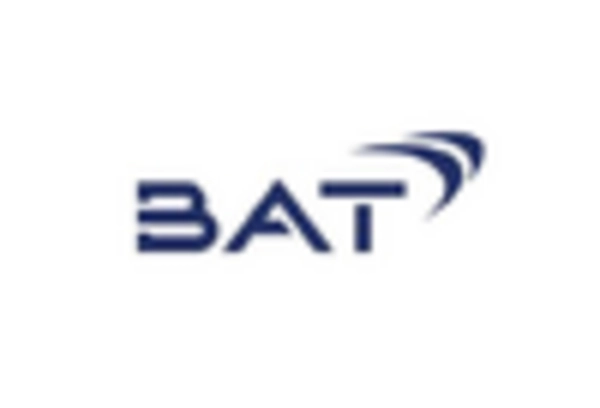Changing Regulatory Landscape
The regulatory environment surrounding tobacco products is continuously evolving, impacting the smokeless tobacco market. Recent legislative measures aimed at reducing tobacco use have led to increased scrutiny of smokeless products. In 2025, the smokeless tobacco market is navigating a complex regulatory framework that includes age restrictions and marketing limitations. These regulations may pose challenges for manufacturers but also create opportunities for compliance-driven innovation. Companies that proactively adapt to these changes are likely to gain a competitive edge. Furthermore, the smokeless tobacco market may benefit from potential regulatory shifts that favor less harmful alternatives, as public health initiatives increasingly focus on harm reduction strategies. This dynamic regulatory landscape necessitates that stakeholders remain vigilant and responsive to changes that could influence market access and consumer perceptions.
Evolving Consumer Preferences
The smokeless tobacco market is experiencing a shift in consumer preferences, with an increasing number of individuals seeking alternatives to traditional smoking. This trend is driven by a growing awareness of health risks associated with smoking, leading consumers to explore smokeless options. In 2025, it is estimated that approximately 10% of tobacco users in the US have transitioned to smokeless products, reflecting a notable change in consumption patterns. The smokeless tobacco market is adapting to these evolving preferences by introducing a variety of flavors and product formats, appealing to a broader demographic. This diversification not only attracts new users but also retains existing customers who are looking for less harmful alternatives. As consumer preferences continue to evolve, the smokeless tobacco market is likely to see sustained growth in the coming years.
Increased Marketing and Brand Awareness
Marketing strategies within the smokeless tobacco market are evolving, with companies increasingly focusing on brand awareness and consumer engagement. The rise of digital marketing platforms has enabled brands to reach a wider audience, particularly younger consumers who are more receptive to online advertising. In 2025, it is projected that marketing expenditures in the smokeless tobacco market will increase by approximately 20%, reflecting the industry's commitment to enhancing brand visibility. This heightened focus on marketing not only promotes product awareness but also fosters brand loyalty among consumers. As companies invest in targeted advertising campaigns and sponsorships, the smokeless tobacco market is likely to see a positive impact on sales and market share. This trend underscores the importance of effective marketing in driving growth and sustaining interest in smokeless tobacco products.
Rising Demand for Alternative Nicotine Products
The smokeless tobacco market is witnessing a surge in demand for alternative nicotine products, driven by consumers seeking less harmful options. This trend is particularly pronounced among younger demographics, who are increasingly turning to smokeless products as a substitute for traditional cigarettes. In 2025, it is estimated that the market for smokeless tobacco products will account for approximately 15% of the overall tobacco market in the US. The smokeless tobacco market is capitalizing on this trend by offering a diverse range of products, including flavored pouches and chewable tobacco. This diversification not only caters to varying consumer preferences but also positions the smokeless tobacco market favorably in a competitive landscape. As awareness of the risks associated with smoking continues to grow, the demand for alternative nicotine products is likely to remain strong, driving further growth in the smokeless tobacco market.
Technological Advancements in Product Development
Technological innovations play a crucial role in shaping the smokeless tobacco market. The introduction of advanced manufacturing techniques and product formulations has led to the development of new smokeless products that are perceived as safer and more appealing. For instance, the emergence of nicotine pouches and herbal snuff has expanded the product range available to consumers. In 2025, the smokeless tobacco market is projected to witness a growth rate of around 5% annually, driven by these technological advancements. Companies are investing in research and development to create products that not only meet regulatory standards but also cater to consumer demands for quality and safety. This focus on innovation is likely to enhance the competitive landscape of the smokeless tobacco market, as brands strive to differentiate themselves through unique offerings.

















Leave a Comment